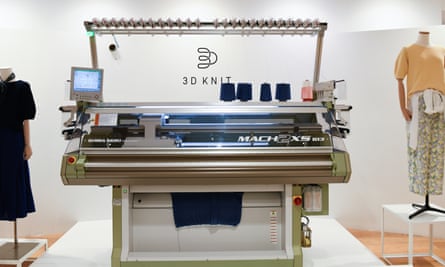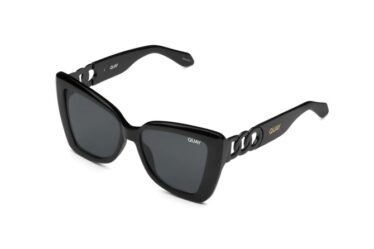
When it comes to finding sustainable leggings, the equation is complicated because – more than other clothes – leggings need to stretch. They require an immense amount of the elasticity provided by synthetic materials like polyester, nylon and elastane which are all derived from fossil fuels and aren’t great for the planet.
There are some more environmentally friendly plant-based alternatives on the market like bamboo, cotton and hemp. But most of the time these are blended with synthetic materials that make them harder to recycle and compromises their ability to biodegrade.
While I am usually an advocate for natural fibres, leggings for exercise are the one area where I tend to waver. I work out most days and I sweat a lot. Although I wear cotton singlets, I swear by polyester and nylon bottoms.
I only own two pairs. I’ve had them both for more than four years and they are on a steady rotation of wear and washing without showing signs of age. Unless I lose them, I don’t foresee ever having to replace them. Which by one metric makes them sustainable.
To help us make sense of this particular clothing maze, I spoke to some experts about how to buy leggings that will hold up your bum without dragging down the planet.
Seek seamless styles
One way to lessen the impact of your leggings is by buying fewer pairs. “Durability is really important,” says Anneli Melander, who works in production and product development for Swedish Stockings. “The overall environmental impact of a pair of leggings or any product in general is very much dependent on its longevity.”
When nutritionist and yoga teacher Raj Barker needs new yoga pants, durability is her first priority. She opts for sweat-wicking leggings that are made from elastane and nylon blends and move with her body. They need to have enough weight to hold their shape, which also prevents them from becoming see-through over time. She suggests avoiding leggings with too many seams or panels, as they show signs of wear faster.
At Swedish Stockings, Melander says they use a technique called 3D knitting, which allows them to make garments with fewer seams. It “ensures a higher quality and longer lasting material”, she says.
Material concerns
Opting for leggings derived from fossil fuels under the name of sustainability might feel confounding, but it’s not worth opting for plant-based materials if you have to compromise on key performance features, such as moisture wicking or longevity. If leggings sag or bunch, you won’t want to wear them, which defeats the purpose.
Leggings made from recycled synthetic materials are now widely available too, but be warned, not all recycled PET is good for the environment. While recycled polyester has a lower carbon footprint than virgin polyester, it is often blended with virgin materials to achieve the right quality.
Melander says there are other great materials available like Econyl, a type of nylon made from waste found in oceans. Certifications such as the Global Recycling Standard (GRS) can be a good indication that the recycled materials on offer were reputably sourced.
Melander also recommends new material innovations like biobased synthetics – “for example, EVO yarn that is made from castor seed oil”. Other fibres in this space include Pyratex, a plant-based synthetic material, and Roica V550, a compostable elastane.

There are also leggings available in manmade cellulosic fibres such as lyocell and bamboo, but since these materials have been linked to deforestation, be sure they come with FSC (Forest Stewardship Council) or PEFC (or, in Australia, Responsible Wood) certifications.
How was it made?
Learning about a brand’s manufacturing practices might take some digging. Barker says that when she branches out to a new brand, she checks whether the company has demonstrable sustainable and ethical practices, such as certifications, factories powered by renewable energy, and clear waste-management policies.
Certifications are also “a great way for the customer to guarantee that the production really meets the level of sustainability that is claimed”, says Melander. A brand that maintains safe labour standards will have certifications like SA800 and Fair Trade. These things should also be laid out in their code of conduct. Certifications like bluesign and OEKO-TEX indicate safe and sustainable standards of production have been met.
Dry on the line
Since buying less and using what we already own more is at the heart of a sustainable fashion system, be sure to take good care of your leggings.
“I use a natural washing detergent and try to line dry as much as possible,” Barker says.
Since moving from New York (where she had to use a dryer) back to Sydney, where she has access to a clothes line, she’s noticed a huge difference in the life span of her leggings.
“Line drying is much better for your clothes, full stop, but especially your yoga pants.”



